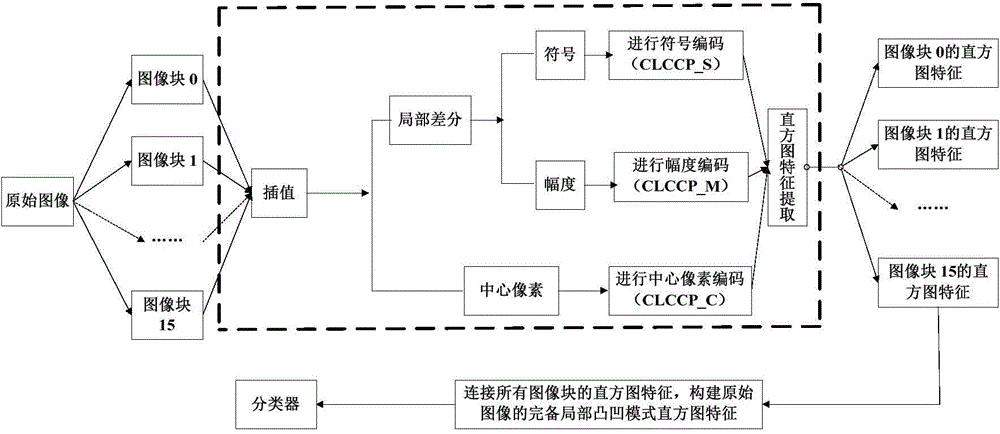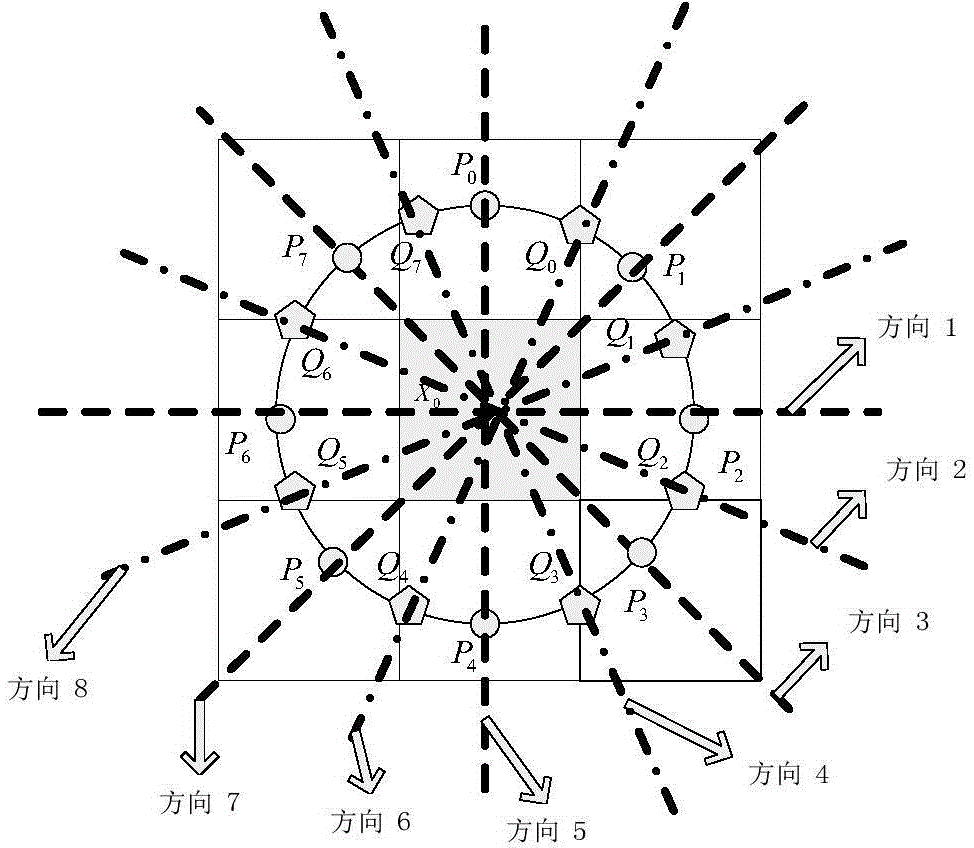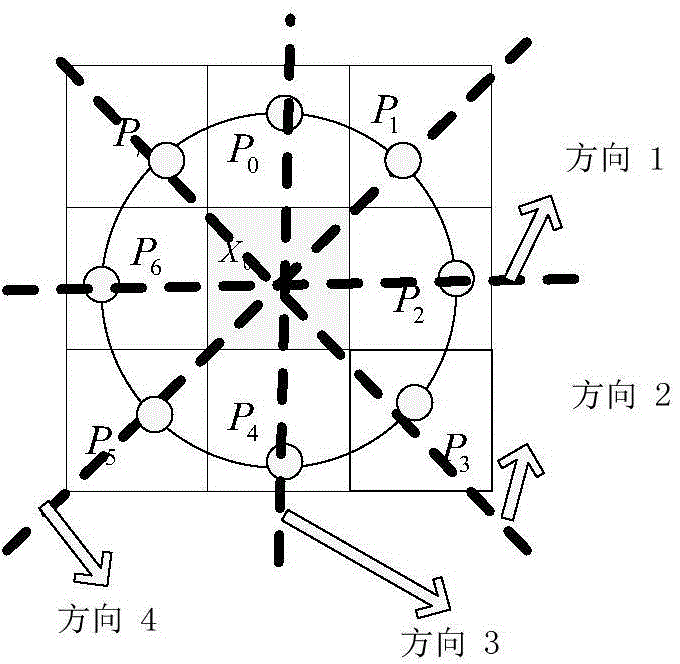Illumination face recognition method based on completed local convex-and-concave pattern
A face recognition, partial technology, applied in the field of illumination face recognition
- Summary
- Abstract
- Description
- Claims
- Application Information
AI Technical Summary
Problems solved by technology
Method used
Image
Examples
Embodiment 1
[0039] Embodiment 1: as Figure 1-7 As shown, an illuminated face recognition method based on a complete local convex-concave pattern first divides the image into blocks; then performs bilinear interpolation on each block image, so that each pixel in the image can construct 8 symmetrical directions, Then calculate the local difference of each pixel in the block image along 8 directions; then encode the sign feature and amplitude feature of the local difference; encode each pixel of each image block to obtain the central pixel feature of each image block; Next, extract the histogram feature vector from the feature matrix of the symbol feature, amplitude feature, and center pixel feature of each block image, and connect the histogram feature vectors of the block image symbol feature, amplitude feature, and center pixel feature in turn to obtain each block The histogram feature vector of the image; finally, the histogram feature vector of each block image is connected to obtain t...
Embodiment 2
[0055] Embodiment 2: as Figure 1-7 As shown, an illuminated face recognition method based on a complete local convex-concave pattern first divides the image into blocks; then performs bilinear interpolation on each block image, so that each pixel in the image can construct 8 symmetrical directions, Then calculate the local difference of each pixel in the block image along 8 directions; then encode the sign feature and amplitude feature of the local difference; encode each pixel of each image block to obtain the central pixel feature of each image block; Next, extract the histogram feature vector from the feature matrix of the symbol feature, amplitude feature, and center pixel feature of each block image, and connect the histogram feature vectors of the block image symbol feature, amplitude feature, and center pixel feature in turn to obtain each block The histogram feature vector of the image; finally, the histogram feature vector of each block image is connected to obtain t...
PUM
 Login to View More
Login to View More Abstract
Description
Claims
Application Information
 Login to View More
Login to View More - R&D
- Intellectual Property
- Life Sciences
- Materials
- Tech Scout
- Unparalleled Data Quality
- Higher Quality Content
- 60% Fewer Hallucinations
Browse by: Latest US Patents, China's latest patents, Technical Efficacy Thesaurus, Application Domain, Technology Topic, Popular Technical Reports.
© 2025 PatSnap. All rights reserved.Legal|Privacy policy|Modern Slavery Act Transparency Statement|Sitemap|About US| Contact US: help@patsnap.com



